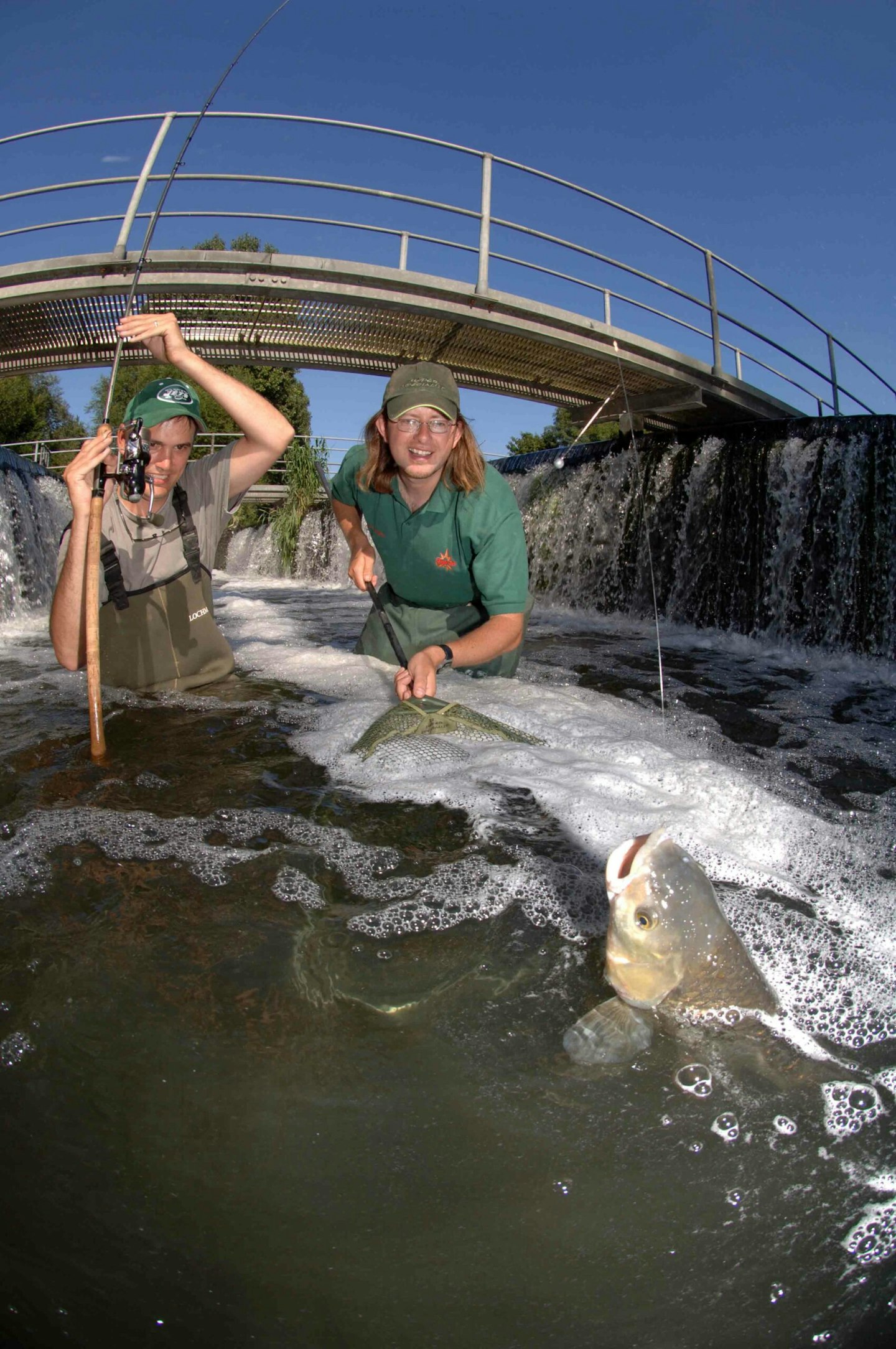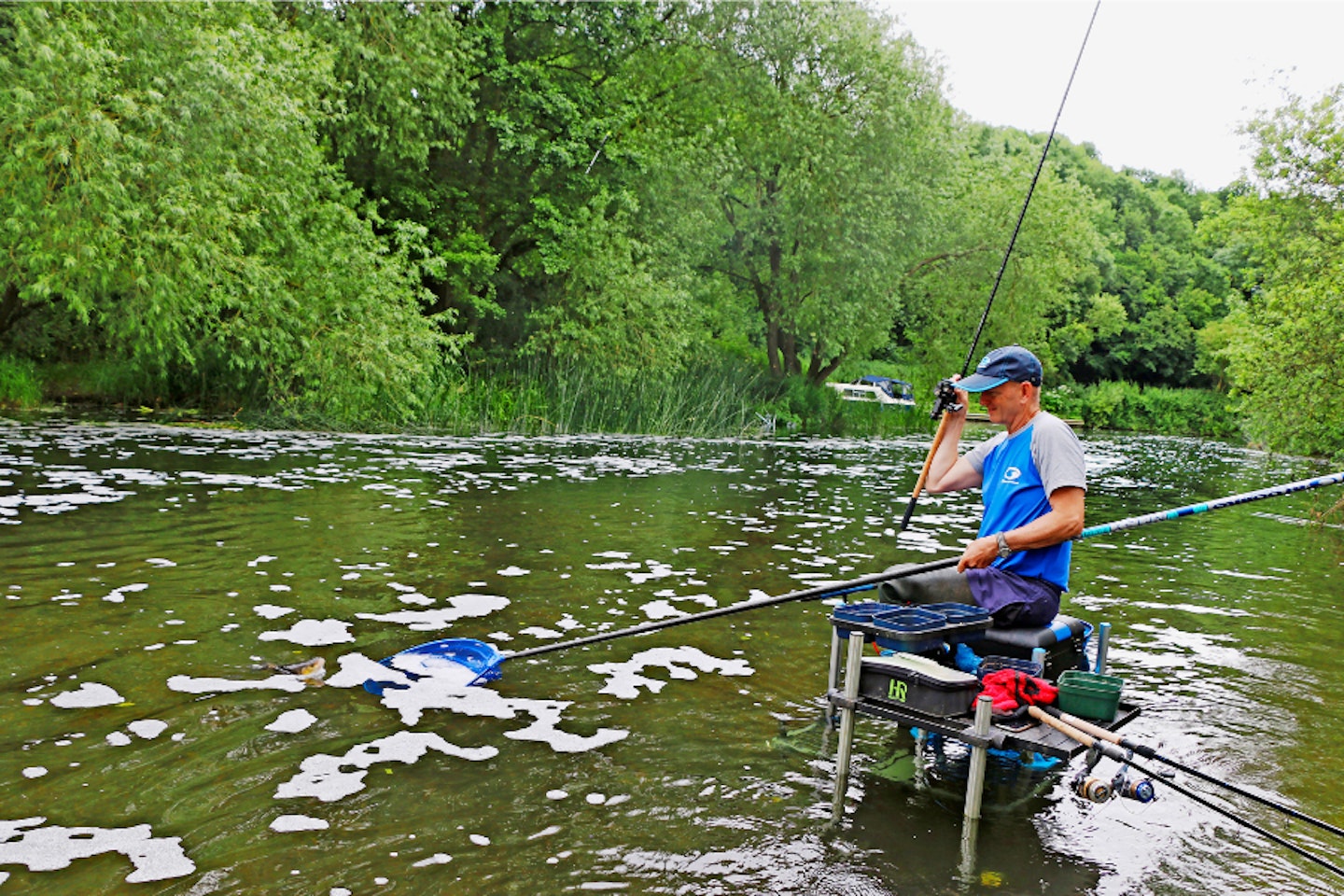Well-oxygenated and teeming with a diverse range of fish, weir pools represent some of the most exceptional features along any river. However, they can initially appear intimidating to anglers.
The powerful currents that create white foam on the surface, along with hidden snags, aquatic vegetation, and fluctuating water levels, pose significant challenges. Nevertheless, the fish inhabiting weirs exhibit predictable behaviour, making it easier for anglers to identify their preferred habitats.
Target the 'crease' for chub
Chub tend to position themselves just outside of the main current, poised to detect food items carried by the flow. Areas known as 'creases,' where fast-moving water converges with slower currents, can be particularly fruitful, as chub frequently dart out to seize a meal.
Present a static bait positioned at the edge of the crease, employing a lead, small maggot, or cage feeder, alongside a substantial bait that is difficult for the fish to overlook. A group of maggots can be effective if small fish are not a concern; otherwise, alternatives such as a lobworm, breadflake, or a 10mm halibut pellet work well. Use the feeder to get some bait down before you begin to fish. A waggler, stick or Avon float can also work, trotted past the slack.
You can use loose feed; however, ensure it is introduced upstream of where you are fishing so when it reaches the bottom it’s where your rig is positioned.
THE BEST CHUB RODS ARE CAPABLE OF A VARIETY OF TECHNIQUES, OUR GUIDE DISCUSSES THE BEST.

Get in the flow for roach, dace, and pike
Roach and dace are well-adapted to fast currents and can typically be found in areas with fast flowing water. Pike are often nearby, particularly when a deep hole is present that often attracts prey fish.
To catch these silver fish, use a stick float or waggler, and find a clean-bottomed run to trot the rig upto 50 yards downstream. Maintain a consistent supply of maggots, casters, or hemp throughout the run. You will quickly identify where the feed settles on the bottom, as this is where bites are most likely to occur.
For bait, consider using single or double maggots, adjusting the float to just touch the bottom. Alternatively, employing a small maggot feeder can effectively present a static bait if the current is too fast. This technique may also throw up the odd bonus surprise, such as chub, barbel or large perch.
EXCELLENT FISHING CAN BE ENJOYED ON THE RIVER, SOMETIMES EVEN FOR FREE. OUR GUIDE TO RIVER FISHING FOR FREE SHOWS YOU WHERE.

Bream love slack-water
Just below the weir sill, the surface of the water may appear turbulent; however, at the bottom, the current can be considerably slow-moving, this area will accumulate natural food as it settles out in the slower moving water. This environment often attracts large bream, allowing them to escape the turbulent flow of the main weir while foraging for natural food.
A feeder approach is the most effective way to fish, particularly for targeting bream, which are fond of groundbait. I recommend a cage feeder filled with a mixture of crumb, along with a generous addition of chopped worms, casters, and/or pellets. When it comes to hookbaits, whole worms are considered the premier choice for attracting bream but don’t neglect pellets.
Pick a feeder carrying a loading of 1oz or more to start, and be prepared to go heavier, if needed, to hold bottom. Cast the feeder into the head of the weir, allowing it to sink to the bottom, where the water flows more slowly. When fishing, keep the rod elevated to minimise the amount of line in contact with the turbulent surface.
NEED MORE TIPS TO IMPROVE YOUR RIVER FISHING? CHECK OUT THIS EXPERT ADVICE ARTICLE.

Tight to the weir for barbel and perch
The two species most frequently found directly beneath the weir are perch and barbel. Both species benefit from the back eddies created by the pool, which carry lots of food items their way.
For targeting barbel, a straight lead, a substantial weight is recommended 4oz+ to anchor the bait in the current, don’t be afraid to play around with the size of the lead to find the one that holds position. A fishy or meaty boilie or pellet ranging from 10mm to 16mm, or even traditional options like luncheon meat or lobworms are irresistible hookbaits If possible, a safety lead clip system is advisable, as this will allow the fish to free itself in the event of a snag. Additionally, ensure your tackle is adequately robust, using a minimum of 12lb line and a size 8 hook.
To effectively loosefeed, a PVA bag filled with pellets and chopped boilies will create a concentrated feeding area around the hookbait. It is crucial to thread the bag down your hooklink; merely attaching it to the hook will result in the bag being swept away by the current before the rig settles.
If perch are your target, focus on back eddies or slightly slower water adjacent to the main sill, as these areas serve as excellent ambush points for perch. A legered lobworm is highly effective and will often pick out the bigger fish, but an excellent method for locating perch initially involves casting with a lure rod and a small jig. This approach will help identify any fish present in the pool, after which you can deploy a ledgered worm along with loosefed red maggots to attempt to catch a specimen.
TAMING THE KING OF THE RIVER WILL REQUIRE THE BEST BARBEL RODS, OUR GUIDE HIGHLIGHTS OUR PICK OF THE BEST.

